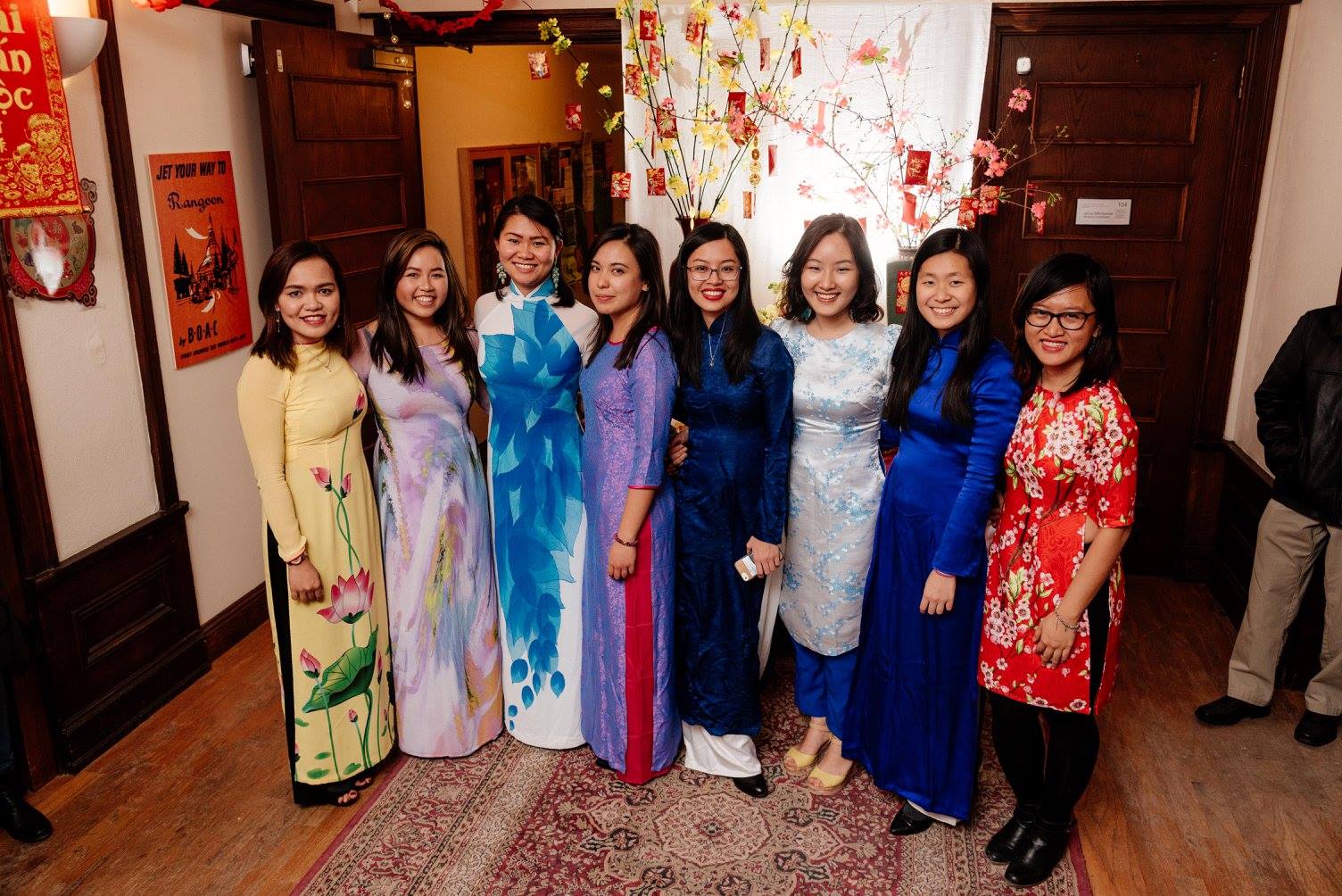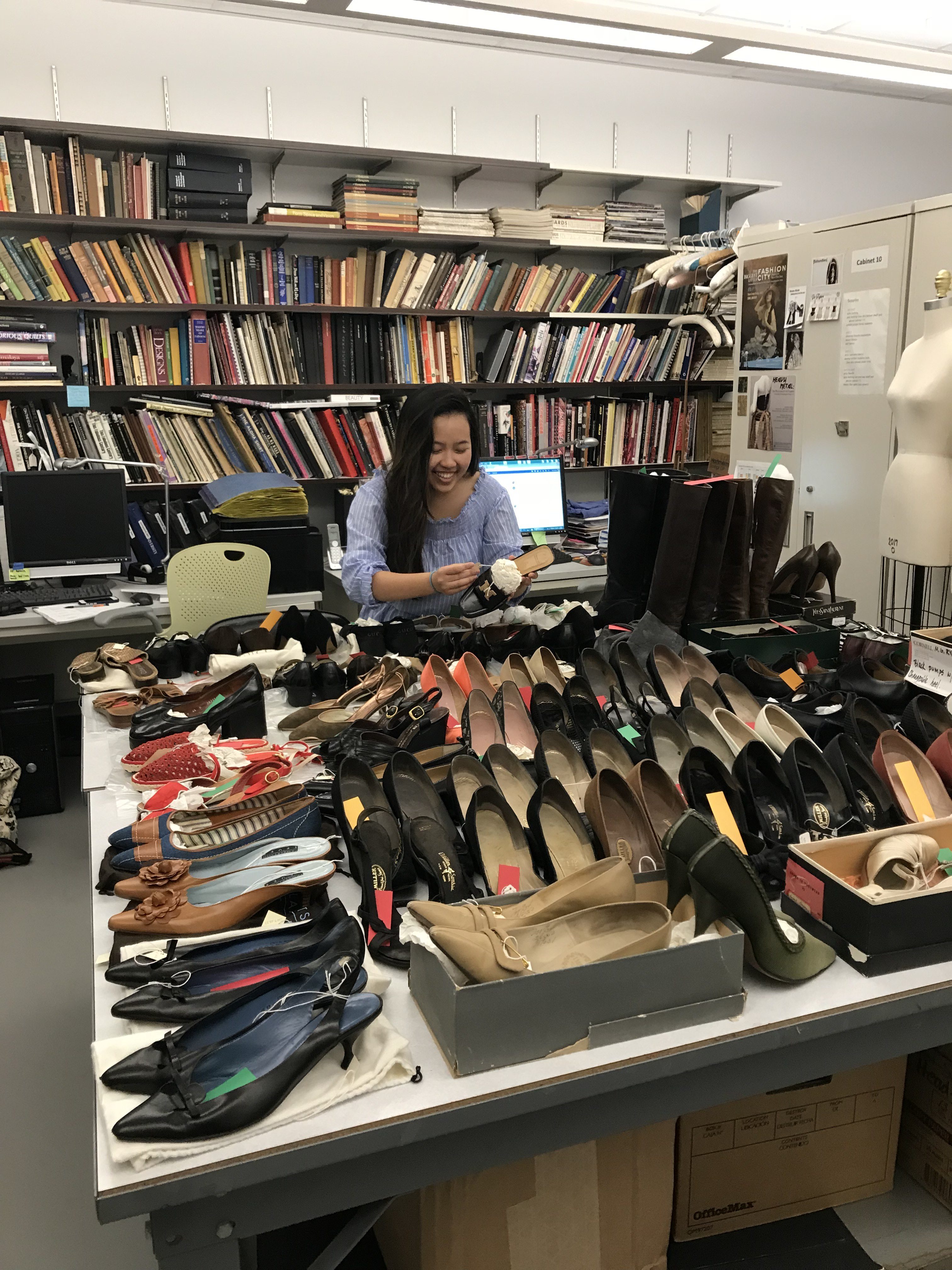 Tuyen began working in the Cornell Costume & Textile Collection this past academic year and will be working with us this summer! She is majoring in Fashion Design Management and Cornell class of 2020.
Tuyen began working in the Cornell Costume & Textile Collection this past academic year and will be working with us this summer! She is majoring in Fashion Design Management and Cornell class of 2020. When did you begin working in the collection and what inspired you to join the CCTC?
I helped out the Costume Collection during Fall 2017, but did not start working until Spring 2018. I wanted to join CCTC in hopes of learning more about fashion history while also satisfying my own curiosity about the stories behind the pieces.
My favorite piece would have to be the long brown horse hair coat made from John H Veghte’s favorite horse after he passed away. The coat was made by the Crosby Frisian Fur Company for Veghte who later became sheriff at Somerset County. I came across this coat on my very first day of work and I was immediately drawn to the texture. However, the story behind it was even more fascinating. As I was about to criticize the use of animal for the fur coat, I learned about how the coat came to be. The owner wanted to keep his favorite horse’s spirit alive, so a great way to do that was to wear it on his body. While there is a lot of controversy around animal cruelty and killing animals for their fur or skin, this coat’s story justifies why in some cases it is acceptable to use a part of an animal for clothing. To me, if the horse was already dead, why not make use of the resources provided by nature? In this case, the coat provided both sentimental value to the owner and was an efficient use of resources. Overall, the story and conversation this piece brought piqued my curiosity to find more pieces in the collection with a story as riveting as this one.
Share one surprising thing you’ve learned while working in the collection:
I have learned many fun facts about fashion history even in the short amount of time I have been a part of the CCTC, but one recent surprising information I learned was about the history of foot binding. I was to surprised to learn that Chinese women had historically bound their feet within a ~3 inch (in length) shoe, all the in the name of status.
What are your career goals? How do you imagine working in the CCTC will help you to realize these goals?
I know for sure I want fashion to be a part of my career, or at least the creativity aspect. I’m very open to whatever comes my way and I am still exploring. However, I definitely want to address problems the current industry faces. Being in the CCTC will help we gain another perspective on fashion that many people don’t give a second thought about: the history and the stories behind clothes and why we dress the ways we do. I hope my journey in exploring the collection helps me inform the general public about these stories and the craft of clothing, far beyond the trends they see and follow.

If you were to donate one item from your personal wardrobe to the collection, what would it be and why?
If I were to donate an item from my wardrobe, I would choose to donate one of my traditional Vietnamese outfits. This ensemble consists of a floor length tunic with side slits from the waist down, and worn loosely fitted trousers. This outfit is meant to be fitted at the top down to the waist, then flowing from the waist down; it is known to accentuate the figure of Vietnamese women. I think it’s important to learn about other cultures and their dress, especially less popularly known ones because we are always showered with Eurocentric information and perspectives.
 What is missing from the CCTC? What garment, textile, or accessory do you think we should have, but don’t?
What is missing from the CCTC? What garment, textile, or accessory do you think we should have, but don’t? I think you the CCTC should have more examples from different countries and cultures. It always excites me to learn about another culture and you can learn so much about a society through the clothes people wear. I may be biased, but it would be very cool to have traditional garments from Southeastern or Eastern Asian cultures, as these countries have very deep and rich cultures.
What has been your most meaningful experience/project/achievement/memory working in the CCTC?
I thoroughly enjoyed picking out my favorite garment to be feature in the upcoming Texture exhibit. As a new member, it was immensely helpful but also fun to peruse the collection and take in the extensive assortment it has to offer.

What is your hope for the future of the CCTC?
I hope CCTC will gain more exposure on campus and be a resource to other students outside of the FSAD department. Our non-Western collections could be a great resource for students to learn more about diverse cultural expressions.


